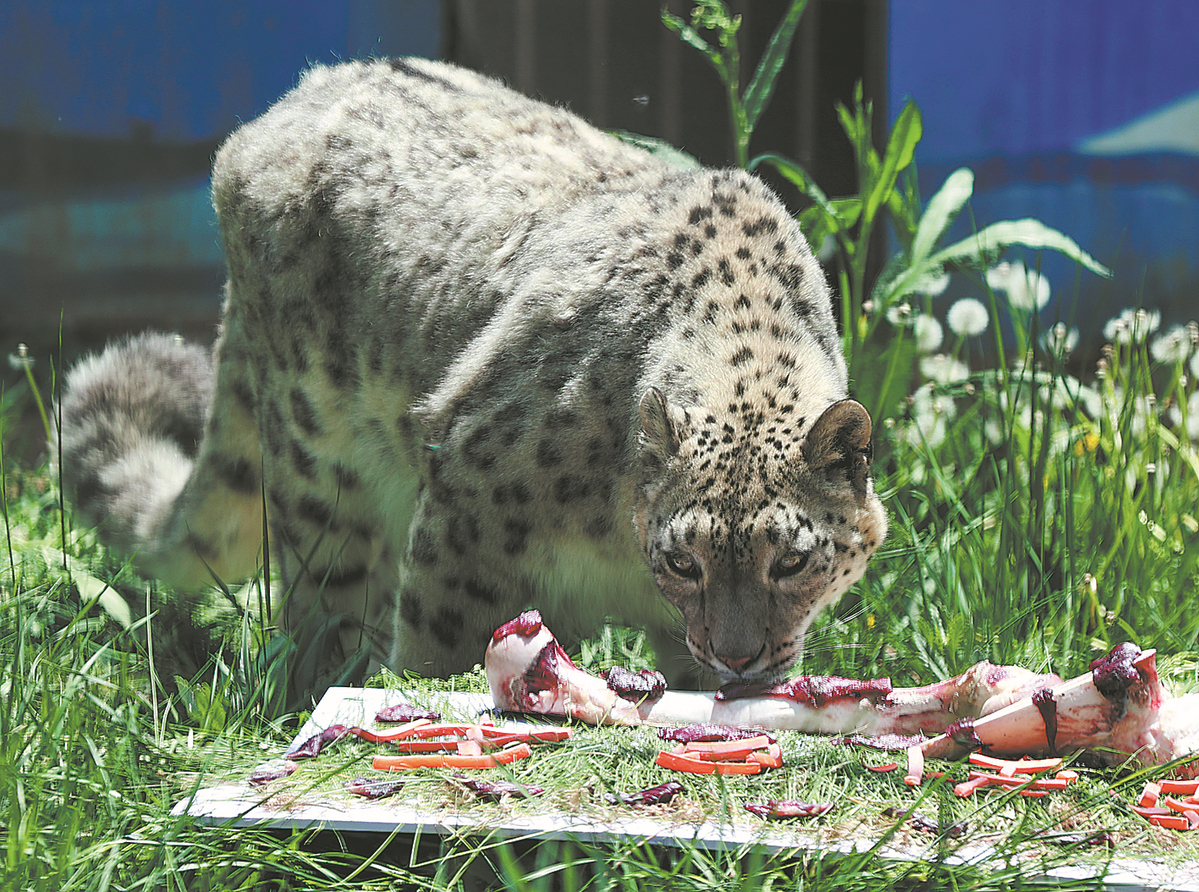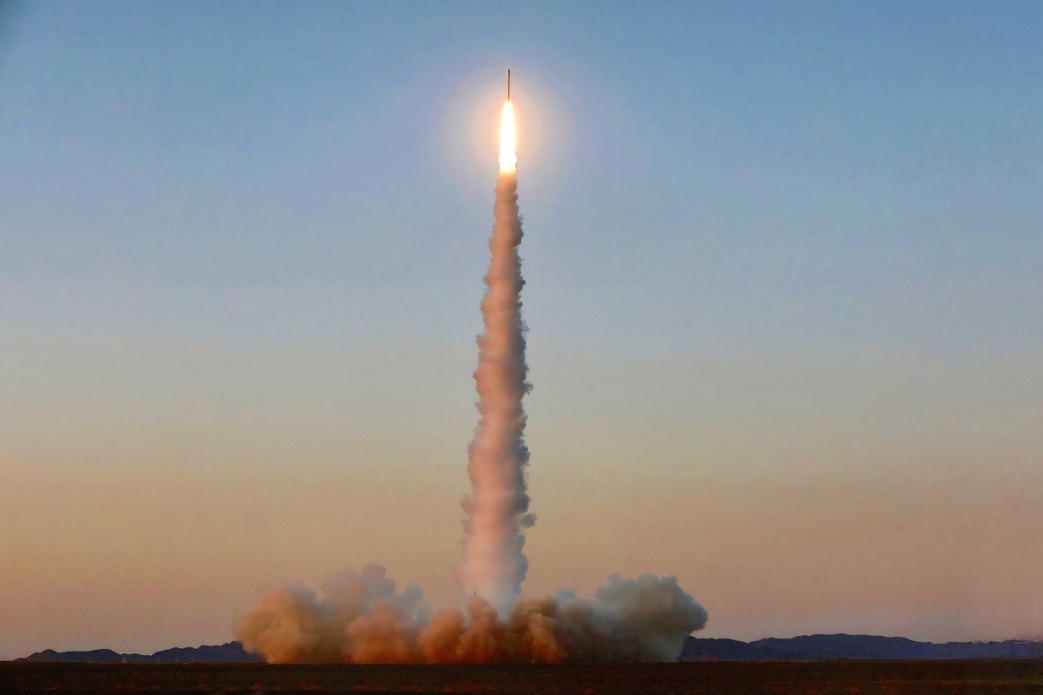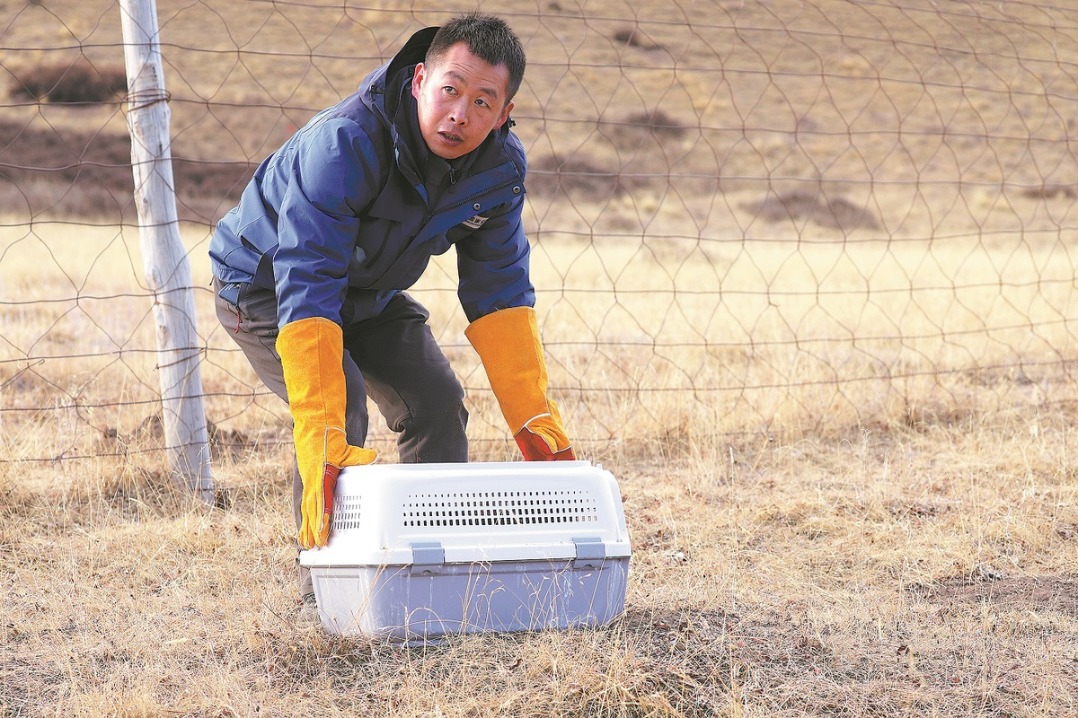Snow leopard's birthday shows China's efforts in biodiversity conservation


On the Qinghai-Tibet Plateau, a female snow leopard named Ao Xue — China's oldest living artificially bred snow leopard — recently celebrated its ninth birthday.
The Qinghai-Tibet Plateau Wildlife Park in Xining, capital of Qinghai province, had not successfully bred a snow leopard for 30 years before Ao Xue was born on June 10, 2016.
"Breeding snow leopards feels like walking on eggshells," said Qi Xinzhang, deputy head of the park. Snow leopards, which usually live in alpine regions at elevations of over 3,500 meters, are difficult to rear in captivity due to their sensitivity to their environment's temperature and humidity, as well as their poor resistance to many common germs, according to the park.
The first breeding attempt between Ao Xue's parents was recorded in 2012, and a total of four breeding attempts before Ao Xue's birth produced seven snow leopard cubs, none of which survived.
As part of China's biodiversity conservation efforts, the park in 2012 established a specialized snow leopard breeding team comprising 11 veterinarians and zoo technicians to address key challenges in captive breeding, including artificial pairing, gestational care and the safe delivery of cubs, according to park head He Shunfu.
As early as 2010, the park constructed a snow leopard breeding base built on the mountainside, with individual enclosures each spanning over 600 square meters, according to He. Designed as a nonpublic exhibit, the facility allows snow leopards to thrive in a more secure, stress-free environment.
To address the issue of obesity — which often leads to reduced fertility in snow leopards — staff members at the park have implemented comprehensive measures, including optimized diet formulations, increased provisions of live prey, and environmental enrichment to enhance physical activity and maintain optimal body conditions.
"We have also installed monitoring devices in the breeding area, allowing for the remote observation of cub-rearing progress without disturbing the mother, thereby preventing the mother from killing her cubs due to stress, or from refusing to nurse them for extended periods," He added.
On June 10, 2016, two female snow leopard cubs were born in the park, one of which was Ao Xue. The cubs' team of carers developed a cub-rearing plan combining maternal care with artificial rearing. After 87 days of nursing from their mother, Ao Xue and her sister were relocated to the park's westernmost enclosure in a secluded leopard house. To prevent disturbance from visitors, the enclosure's glass walls were covered with printed film.
Under the gentle care of the park's staff, Ao Xue ultimately survived and thrived. In May 2017, she was relocated from the breeding base to a 240-square-meter snow leopard enclosure that was carefully designed to mimic the natural wild habitats of snow leopards as closely as possible, and there she made her public debut.
Advancing technologies have played a pivotal role in subsequent successful breeding programs. In May 2019, the park welcomed another set of female snow leopard twins, Shui Mo and You Hua. By then, technicians had incorporated greater international cub-rearing expertise, allowing them to adjust feeding regimens scientifically. As a result, the cubs exhibited significantly improved development compared to Ao Xue, increasing their body weight by 30 percent.
The park also engaged a specialist as its chief veterinary officer to develop a comprehensive biosecurity protocol for the entire breeding cycle, encompassing enclosure disinfection, maintaining medication frequency, periodic deworming and prophylactic vaccination — all of which were implemented to enhance the cub survival rate — and assigned a dedicated animal keeper to care for the snow leopard sisters.
The latest data indicates the sustained growth of China's snow leopard population, with the number of monitored individual snow leopards exceeding 1,200.
The recovery of wild populations signifies a major breakthrough in snow leopard conservation, said Lian Xinming, a researcher at the Chinese Academy of Sciences' Northwest Institute of Plateau Biology.
Ever-advancing captive snow leopard breeding techniques now provide a robust scientific foundation and technical support for both ex-situ conservation programs and research into the species' biological traits, behavioral patterns and reproductive mechanisms, Lian added.
Since its establishment, the park has rescued and rehabilitated over 2,200 wild animals encompassing 62 species, including snow leopards, Przewalski's gazelles and black-necked cranes. Notably, nearly one-third of these animals later regained wild survival competency and were successfully reintroduced into their natural habitats.
"We have developed an integrated model combining systematic rescue operations with individual scientific monitoring for the rehabilitation, protection and release of wildlife such as snow leopards, Chinese mountain cats, black storks and Eurasian lynxes, achieving the seamless fusion of veterinary medicine and conservation ecology," Qi said.
He added that in the future, Qinghai will strengthen its rescue efforts, conservation measures and public education for snow leopards and other wildlife species.
Snow leopards are under China's highest level of national protection and are listed as vulnerable by the International Union for Conservation of Nature.
Xinhua
- Macao SAR's broad money supply expands in July
- China's landmark trade corridor freight tops 1m TEUs in 2025
- Shandong-Taiwan trade fair held in Weifang
- China's CERES 1 rocket launches new satellites
- Better regulation of tipping behaviors urged to boost livestreaming sector
- China premieres first 8K documentary on manned spaceflight mission




































